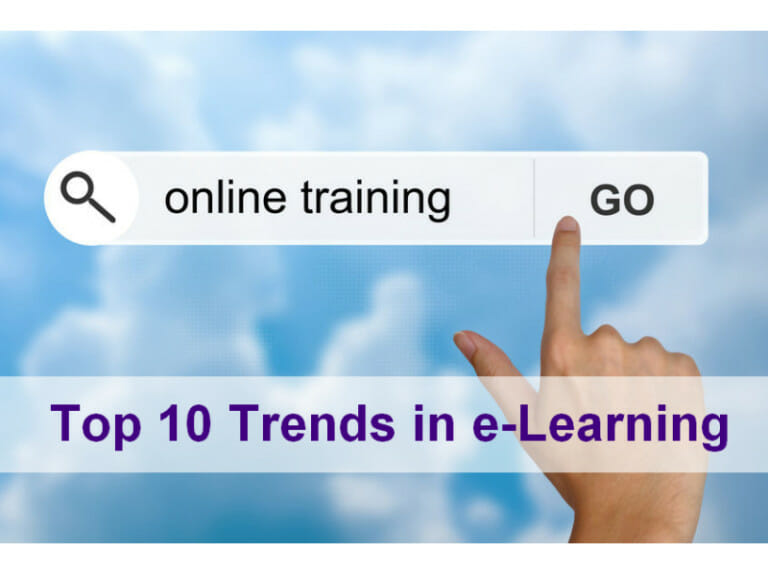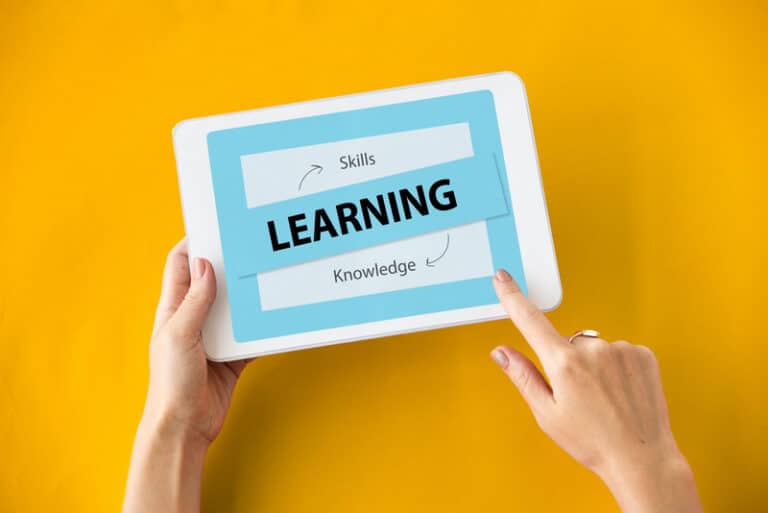Microlearning trends 2020-2025
What key forces are expected to shape online training options in the next five years (2020-2025), especially regulatory compliance training? While digital engagement technologies continue to immerse learners in “knowledge-gaining” experiences, none is more important than the concept of microlearning (micro-learning). In this article, we review some of the benefits and principles of microlearning and the microlearning definition.
Microlearning in practice
Microlearning, through temporally-relevant digital training delivery, is growing significantly in relation to Covid-19 protections, including isolation measures. But it was popular long before Covid minimised the use of face-to-face, in-person training options.
Before we discuss the concepts and principles of microlearning, let’s review the quick synopsis of benefits of digital delivery methods.
For well over 15 years, training delivery methods have been migrating from the onsite/classroom delivery methods to live-streamed courses, short-form webinars, blended learning experiences, and a variety of eLearning options.
In the past year, since the rapidly transmitted Covid virus became a global fear and life-threatening pandemic:
- Businesses impacted by Covid-based disruptions — especially businesses that must ensure GMP compliance training occurs on an even stricter budget — are engaging in MORE digital training options for GMP learning as well as a blended delivery methods
- For efficiency and cost savings, they are typically using eLearning at increased levels, both:
- As a supplement to in-house training
- Along with virtual training options and digital induction courses
- To prepare for virtual audits for GMP compliance
Today, MOST businesses are finding online training courses – in manageable doses – increasingly:
- affordable
- flexible
- trackable (Certificate GMP courses)
- budget-friendly, especially when training large numbers of personnel
Microlearning and digital training in the era of Covid-19 protections and lockdowns
The good news is that — for regulatory compliance, GMP Audits, and other learning needs — microlearning is a more practical and economical way to upskill your personnel.
In general, it is often more convenient to attend a live-streamed training workshop than traditional classroom sessions.
eLearning courses can also be accessed 24/7, with agenda options offering ‘as needed, topic-specific’ deep-dives. Personnel can also start their eLearning training immediately on order, and the Supervisor can purchase discounted training bundles of 100 modules for a very reasonable cost, and assign the courses to individual personnel, as needed.
So eLearning is becoming increasingly popular in the current COVID-19 climate and will continue to be so, post-Covid crisis (when we get there).
In fact, many pharmaceutical manufacturing businesses, laboratories, hospitals, universities, and medical device manufacturers are now relying more on online training options to meet their GMP compliance training requirements.
GMP compliance training is even more convenient today, as digital training options continue to expand.
Businesses are finding GMP compliance training MORE convenient primarily because they have more options.
In addition to GMP eLearning options, digital training now includes live-streamed virtual classroom options led by experts in the field. By combining virtual training courses with convenient eLearning options, participants get even greater value – while staying safely socially distanced from other learners.
With combined digital delivery options, learners:
- Gain the chance to learn on their own schedules (with eLearning modules)
- Gain the opportunity to ask an expert about compliance questions (with live-streamed, virtual training options)
Even virtual auditing is becoming an increasingly popular option in recent times.
Read more about virtual auditing options and self-inspections.
Browse live-streamed GMP courses.
Browse our GMP eLearning options (Certificate Courses).
Digitally delivered GMP courses, as well as onsite training, are best when they are supplemented with eLearning options in a blended-learning approach.
This is also an ideal, budget-friendly option for training large groups of personnel on an as-needed basis. Particularly when you need to provide GMP induction training courses and GMP refresher courses (you can purchase large packages of eLearning courses, and then assign individual courses to personnel, throughout the year).
Overall, small group learning attended via videoconferencing, and supplemented by GMP eLearning modules on a variety of compliance topics, gives learners MORE options including:
- How they engage with different types of compliance training
- When they choose to learn (self-directed scheduling and learning experiences)
- What topics they seek to learn (or are assigned by Management, through training bundle packages specific to certain industries and roles)
- Length of engagement with the GMP compliance training materials
Microlearning: Definition
Principles of Microlearning include:
(a) learning resources are provided in ‘even smaller bites’
(b) data is sequenced in a way that permits learners to drill-down to greater depths and/or transverse across the breadth of topics before progressing further
(c) materials are responsive to learner’s existing knowledge and potential knowledge gaps, including retention-aids (e.g., quick quizzes and formal assessments)
(d) time-saving delivery methods such as topic-specific material in individual segments (‘topic chunking’), to save learners time AND increase retention
(e) near-instant applicability of knowledge to improve the likelihood of GMP compliance behaviours
All of which increases learner engagement with topic materials while reducing boredom and distractability during the learning experience.
Learning foundations and Microlearning theories
- Microlearning embraces the theory of just-in-time training delivery
- Training is typically undertaken in shorter periods of time, on an as-needed basis (temporality is crucial)
- Digital delivery methods are most prominent but shorter live-streamed courses are also popular forms of microlearning experiences
- Learning segments are typically used in conjunction with experiential learning options (such as onsite, hands-on training) and/or virtual reality training
Browse the list of virtual live-streamed GMP compliance training courses by PharmOut.
Knowledge vs Skills Training using Microlearning Strategies: Proximity
How soon after learning theory should a learner embark on hands-on exercises and activities?
As with all training delivery methods, the shorter the time between theory lessons and practical application experiences, the better!
- The closer in time that knowledge components of learning or eLearning, and the hands-on practical activities (such as onsite training or direct application of the knowledge), the more effective the theory will be.
- So these components should ideally be delivered in close proximity, taking into account the nature of retention vs forgetfulness that most humans possess.
Training proximity between learning experiences will enable learners to put their new knowledge and new skills to use. This helps reinforce the value of the training content (e.g., it moves from theory to application and implementation).
For GMP compliance training, this is a valuable strategy when seeking to instill consistent application of GMP – and a GMP compliant mindset – across all contractors and employees.

Microlearning is the golden standard of modern online training options. Here’s the definition of micro-learning.
The definition of microlearning is just as it sounds.
Microlearning (definition): Microlearning means gaining knowledge and skills in short training bursts, or ‘micro-chunks’ of time. This is accomplished by educators/training providers delivering information and skill-building sessions in easily-manageable chunks of time, available across multiple devices.
Key components of micro-learning and online training course designs are:
- accessibility of the learning resources including:
- user-friendly platforms
- learner-friendly training materials that engage the learner (examples include game-theory based designs)
- ability to be completed discreetly, such as
- on public transportation, with minimal disruptions to other passengers
- at the person’s desk, in a cafe or at a library, without disturbing patrons or colleagues
- logically sequenced information delivery
- completion timeframes requiring only small chunks of time (from 10 minutes to 30 minutes is ideal, and typically no longer than 45 minutes in duration)
- repeatability for increased retention
- access to the learning resources for a set period of time
- emailed/texted reminders of the course expiration dates
- online assessments linked with Certificates of Completion to reward the learner’s efforts and accomplishments
The main benefit of microlearning and online training is that it can avoid overwhelming learners when a lot of information is needing to be absorbed.
Delivering well-defined theoretical information in short bursts of time — along with practice sessions via virtual reality or hands-on sessions — is believed to provide theoretical knowledge and practical exercises in a way that benefits learners by improving (a) engagement, (b) retention and (c) specific skillsets.
Microlearning has been a golden standard of e-learning for several years now. The difference we’ll see with microlearning in 2020-2025 is that online courses will be broken down into even smaller segments and time frames. Additionally, built-in assessments will deliver individually-responsive information — based on knowledge gaps.
This helps avoid repetition of information that learners already understand. These key features will improve individual learning experiences (Ux), by reducing boredom and shortening the training time.
More productive learning experiencers, and higher retention ratios, are expected to result.

Each microlearning online training session will need to include interactive features to enhance completion rates.
- These include responsive technologies that vary content delivery, based on what the learner already knows.
- Pre-existing knowledge is assessed through pre-learning surveys OR via built-in knowledge quizzes throughout the session.
- This prevents re-delivering information the user already knows, and which leads to boredom or disengagement and poor completion rates.
Key features of microlearning are:
- Information is delivered in brief chunks of time
- Information is delivered easily online across multiple devices
- Offers entirely self-paced learning and on-the-go education
- Easily completed during public transport routes (motivation and convenience)
- Can be completed during half-hour to 45-minute lunch breaks
- Multi-media learning experiences include audio, text, images and videos or game-like quizzes
- Digitally-based theory assessments and Certificates of Completion
Popularity of microlearning
Time constraints have always been a major stumbling block for pursuing higher education and additional industry-based qualifications.
This is especially true for would-be-students who juggle careers, caring for children and/or ageing parents, and fulfilling other daily obligations including staying fit and healthy. They want to improve their education levels, or gain an advanced qualification — but they feel they can’t find time.
Enter microlearning theory. Because microlearning and online training options are convenient and easy to use, across multiple devices, microlearning options offers convenience benefits for students AND education and training sectors alike. Early adopters for courses not yet available online will win in the game of attracting students, which is one of the key concerns of education sustainability in 2020.
Why microlearning options and online-training are rapidly replacing historical long-form lecture formats
Problems with classroom lectures in Universities (Delivery format problems)
- Professors have long delivered the same information to numerous students, lecturing for hours at a time
- Interaction or hands-on activities were also low priorities when class sizes were large, as is common in most modern Universities and TAFE RTOs
- Lecture-format weaknesses included:
- not addressing the notable variety in students’ subject interest AND in their pre-existing knowledge
- distractability and boredom
- exhaustion and ‘absorption problems when too much information is delivered in one session (‘brain fry’)
- poor knowledge retention rates after several weeks
Why short-form micro-learning options offer better knowledge retention and engagement
The reason microlearning has become a golden standard for online training courses relates to our ever-increasing dependence on technology — and our ever-decreasing attention spans.
Shorter course durations and micro-learning training programs will be best-practice delivery methods, primarily because we’re already being bombarded with far too much information, on a 24/7 basis.
Microlearning (Definition): Impact on Universities, RTOs, TAFEs and the Education & Training Sector
Given retention rates decline over time, ‘just in time’ training delivery will be the focus of best-practice online training course providers.
Additionally:
- Course designers will need to adapt training course materials to ensure shorter modules and briefer time frames
- Responsive technologies (pre-assessments and inbuilt responsiveness) will be added to existing online courses
- Content curation technologies will be pivotal to ensure only the most relevant information and topics are delivered to the learners
- Automation, usability, and pricing will need to offer flexibility to meet education goals, as well as to accommodate varying education budgets and industry incentives for learning
How is microlearning helpful in learning GMP requirements?

Regulations governing medical devices, pharmaceuticals, supplements, herbal medicines and veterinary medicines are complex.
Learning good manufacturing practices and principles (GMPs) can readily overwhelm new employees or service contractors.
To improve compliance and retention of good manufacturing practices (GMPs), it’s best to teach GMP in smaller segments rather than all at once. Just be sure you only allow new employees to work in supervised capacities in areas where they have an adequate understanding of GMPs.
- GMP requires taking consistent measures to ensure quality, safety and efficacy of produced pharmaceuticals, medical devices and veterinary medicines.
- New employees unfamiliar with GMP can feel overwhelmed by the number of requirements they need to adhere to.
- By offering contractor and employees online GMP training courses, firms can ensure their new hires have a basic understanding of GMP before they start employment (or in their early orientation days); one GMP resource module at a time.
Read the first article in this series: Top 10 e-Learning Trends impacting the education and training sector in 2020-2025
Journal Articles
Journal References & Articles: Can Microlearning help your business with career development?
International Journal of Science & Technology – Research Article on Microlearning
This page is part of a 2020 e-Learning Trends article series including Top 10 e-Learning Trends impacting the education and training sector in 2020-2025
Last updated on July 6th, 2023 at 10:29 am







